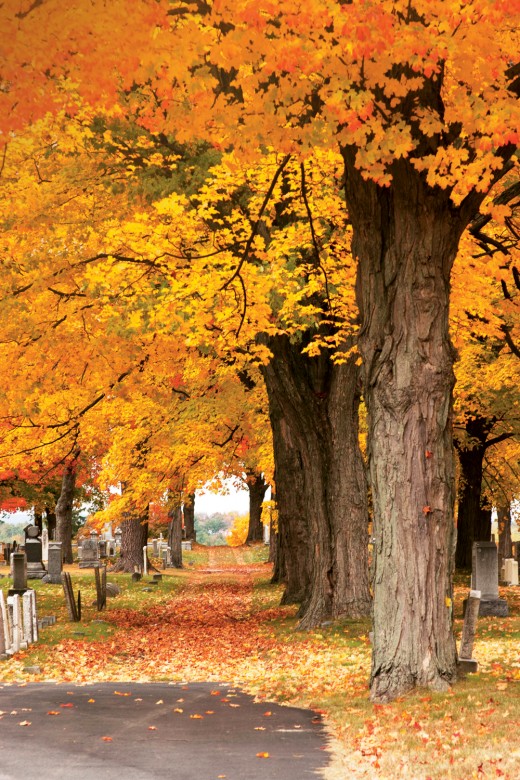Historic Graveyards | New England’s Gifts
For all the tragedy of the stories in their stones, New England’s historic graveyards are restful places.

Governors and congressmen, Revolutionary patriots and Civil War heroes, shoemakers and homemakers, mill owners and ministers, rest together at Pine Hill Cemetery, founded in 1731 in Dover, New Hampshire.
Photo Credit : Jeff “Foliage” Folger
Photo Credit : Jeff “Foliage” Folger
Not far from the house where I grew up in Bath, Maine, was a graveyard. It lay perhaps half a mile from my home, across a large field, through a dense line of trees, on the far side of a stream that ran from there to the sea. The only way to cross to it was along either of two trees that had fallen from opposite banks, one in each direction, like parallel bridges. The gravestones stood on a small rise above the rushing water.It was unlike the graveyards in town; there was no manicured lawn, no neat rows of shiny marble headstones. This graveyard was older, for one thing, put there by the farmers and shipbuilders and sea captains who built the town.
The oldest markers were for the youngest dead. The very first was for a baby, born and died in 1806. Nearby lay a mother who had died in her twenties, with three of her babies buried at her feet. The children’s markers were made of slate, and on some, the names and dates had flaked off. The grand granite monuments were reserved for the heads of the families buried there: Crawford and Timmins are the names I remember. One man lived into his nineties, and a small brass disc marked him as a veteran of the Revolution. Next to him a marker stood over a son killed in the heat of Antietam.
For all the tragedy of the stories in those stones, the graveyard was a restful place. It was lost, buried in the woods away from every house, except the one the beavers had built upstream. Trees had grown to reclaim the hill; one stone was half embraced by an oak that must have been a sapling a century after the grave had been dug. Veils of light drifted down through the canopy to lie across the faces of the stones. Most of the stones were heaved and shifted by root and rock, so that it was hard to imagine anything but earth buried beneath them.
There were no flowers on the graves. I don’t remember any Crawfords or Timminses left in the area to care. The graveyard seemed better to me for having been forgotten; the dead there were long at rest, and the living no longer grieved their passing. History lay gently on that hill, a reminder that the place I was from had long been lived in—and would be no worse for my having been there.
—“Buried in the Woods,” by Don Weafer, March 2000


